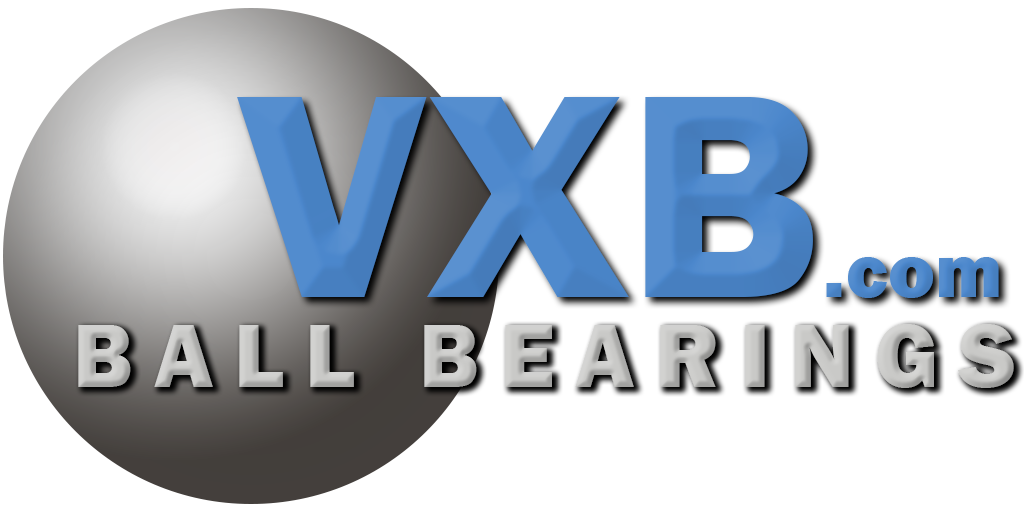Comprehensive Guide to Ball Bearings
Comprehensive Guide to Ball Bearings
✔️ Explained for Engineers and Technicians
Ball bearings are essential in reducing rotational friction and supporting loads. Whether for industrial machinery or high-performance hobbies, choosing the right bearing type can maximize durability and performance. This complete guide covers materials, ABEC ratings, temperature limits, types, and hobby-specific uses.
✅ Key Types of Ball Bearings
- Deep Groove Ball Bearings: Handle high radial and moderate axial loads. Common in motors and wheels.
- Angular Contact Ball Bearings: Designed for combined loads at an angle. Common in pumps and spindles.
- Thrust Ball Bearings: Handle pure axial loads. Found in vertical shafts and rotary tables.
- Self-Aligning Ball Bearings: Automatically correct shaft misalignment. Used in flexible mechanical systems.
- Miniature Ball Bearings: Small-scale bearings for RC, drones, and compact electronics.
- Single Row Angular Contact Bearings: High-speed bearing for one-direction axial + radial load. Found in spindles.
- Double Row Angular Contact Bearings: Compact bearing with bidirectional axial load support. Ideal for gearboxes.
- Hybrid Ceramic Bearings: Steel races + ceramic balls for high-speed, low-friction performance.
- High Temperature Bearings: Built with special materials to resist heat above 200°C.
- Flanged Bearings: Feature mounting flange for easy housing alignment. Common in robotics.
- V Groove Bearings: Track along 90° rails. Ideal for sliding or guided linear motion.
- U Groove Bearings (Gothic Arch): Offer dual-direction guidance on rails. Used in CNC and automation.
- Track Roller Bearings: Heavy-duty bearings designed for cams, rails, and guided tracks.
- Needle Roller Bearings: Use thin rollers for high radial load in limited space. Common in transmissions.
- Thin Section Bearings: Compact cross-section. Used in aerospace, robotics, and imaging equipment.
- POM (Plastic) Bearings: Lightweight, corrosion-resistant bearings for low-load, non-lubricated use.
✅ Load Capacity by Bearing Type
| Bearing Type | Radial Load | Axial Load | Typical Applications |
|---|---|---|---|
| Deep Groove | High | Moderate | Motors, wheels, fans |
| Angular Contact | High | High (One Direction) | Spindles, pumps |
| Thrust Ball | Low | High | Turntables, jacks |
| Self-Aligning | Moderate | Low | Misaligned shafts |
| Miniature | Low | Low | RC, medical, drones |
| Needle Roller | Very High | Low | Gearboxes, pumps |
| Track Roller | High | Moderate | Material handling, cams |
| Thin Section | Moderate | Light | Robotics, optics |
✅ Material Options
- Chrome Steel (AISI 52100): Strong, precise, and economical. Ideal for most industrial uses.
- Stainless Steel (AISI 440C): Rust-resistant, used in food, water, or outdoor environments.
- Zirconia Ceramic: Lightweight, corrosion-free, used in medical and high-speed tools.
- Silicon Nitride: Strong, non-conductive, and used in aerospace or precision tools.
- POM (Acetal): Lightweight polymer for quiet, non-lubricated applications.
✅ Operating Temperature Ranges
- Chrome Steel: -40°C to +150°C
- Stainless Steel: -40°C to +200°C
- Zirconia Ceramic: -220°C to +800°C
- Silicon Nitride: -100°C to +1000°C
- POM Plastic: -40°C to +100°C (short-term 120°C)
✅ ABEC Tolerance Classes
- ABEC 1: General purpose, low-cost machinery or basic tools.
- ABEC 3: Better precision for small motors, skateboards.
- ABEC 5–9: High-speed and accuracy tools like dental, aerospace, and race-grade equipment.
🏁 Hobby & Recreational Applications
- Skateboards: Use 608-2RS or 608-ZZ, ABEC 5 or ceramic for smoother spin.
- Bicycles: Hubs, pedals, and bottom brackets use sealed stainless or hybrid bearings.
- Fishing Reels: Rustproof ceramic/stainless bearings preferred for saltwater.
- Drones / RC: Use miniature ceramic bearings for lightweight speed and efficiency.
🛠 Maintenance & Installation Tips
- Always clean shaft/housing surfaces before installation.
- Use a press or bearing heater—never hammer.
- Apply proper lubrication (oil for speed, grease for durability).
- Keep bearings sealed or shielded to protect from dust/water.
- Monitor for heat, noise, or vibration as signs of wear.
🧮 Bearing Dimension Reference
| Type | Bore (mm) | OD (mm) | Width (mm) | Typical Use |
|---|---|---|---|---|
| 608-2RS | 8 | 22 | 7 | Skateboards, scooters |
| 6201-2RS | 12 | 32 | 10 | Bicycles, fans |
| 6701-2RS | 12 | 18 | 4 | Fishing reels, drones |
💡 FAQ – Frequently Asked Questions
What are the best bearings for skateboards?
Use 608-2RS or ceramic ABEC 5–7 bearings with shields to resist dust and water.
How do I clean saltwater bearings (fishing)?
Rinse with fresh water, dry completely, then apply anti-rust lubricant or oil.
Should I use ceramic bearings for RC/drones?
Yes, for better performance and reduced load. They’re lightweight and fast.
Can I replace standard bearings with POM?
Only if loads and speeds are low. POM is not ideal for high-friction or high-load systems.
